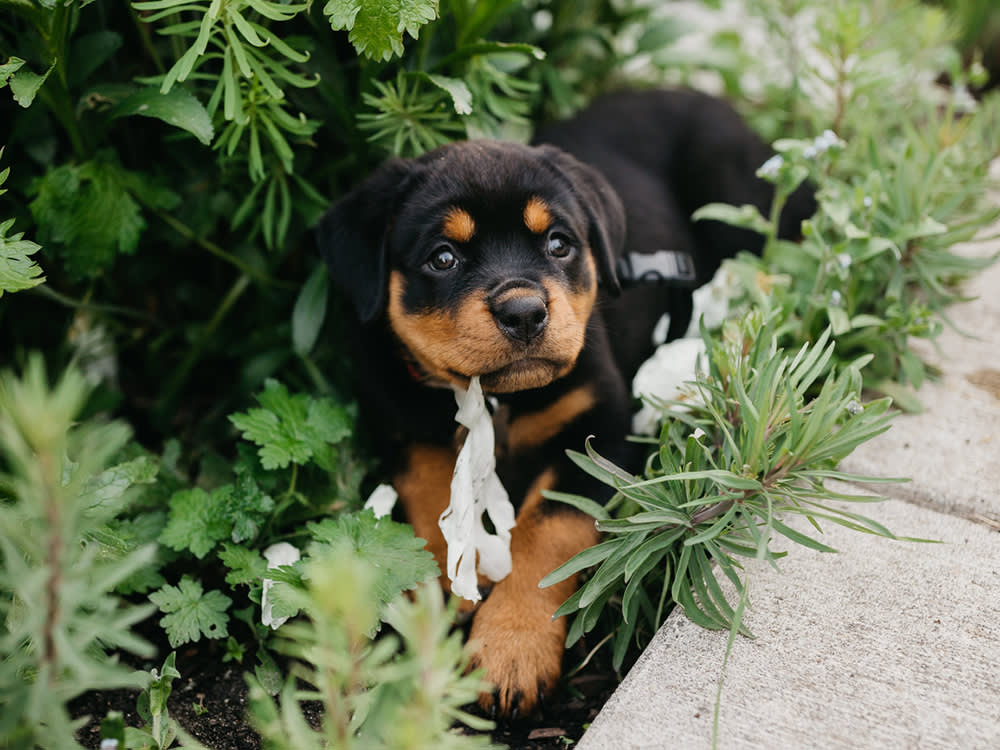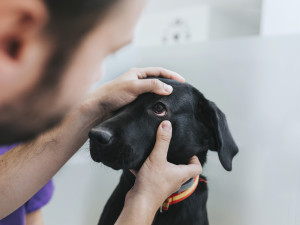Snail Bait Poisoning in Dogs: Symptoms, Treatment and Prevention
It may protect your plants, but at what cost? A veterinarian explains how this toxin may keep your garden safe – but it’s extremely toxic to dogs. Here’s everything you need to know

Share Article
There’s nothing more deflating that noticing a snail’s slimy trail leading towards your precious outdoor plants. When this happens, we usually reach for the snail bait, but beware, it’s actually super-toxic to dogs. Gardeners around the country use snail bait to keep plant-munching creatures at bay. But during the spring and summer months, I treat pups poisoned by it at least once a week. Keep reading to learn how to keep your dog safe, plus non-toxic alternatives to keep those slimy critters out of your garden.
What is snail bait?
The toxic substance found in snail bait is a compound called metaldehyde, and the majority of metaldehyde poisonings are accidental, either due to lack of knowledge of its dangers or the assumption that the compound was properly stored or applied. But as we all know, dogs are notorious for getting into things they shouldn’t and places you think they can’t.

Get (totally free) deals for food, treats, accessories, tech and way more pet parenting must-haves.
opens in a new tabSnail bait is formulated in chewable pellets that are flavoured with molasses, apple and bran to attract snails and slugs. Unfortunately, dogs find the bait a tasty treat as well. Snail bait is also available in liquid and powder forms, which can get on to paws and be licked off with normal grooming. Additionally, many of these products also contain insecticides, which make the exposure potentially even more toxic.
Snail bait is highly toxic and even small amounts are enough to cause poisoning in dogs. Less than a teaspoon per 4.5kgs of body weight can cause life-threatening clinical signs. It can not only hurt dogs, but it can be fatal.
Symptoms of snail bait poisoning in dogs
Signs of metaldehyde poisoning begin quickly after the bait is ingested. Generally, anxious behaviour with mild twitching comes first. This progresses to uncontrollable and severe twitching, followed by seizures and possibly death if not treated promptly.
Severe twitching equates to constant muscle contractions, which can raise body temperature so high that permanent brain damage occurs. When that happens, it’s often referred to as ‘shake and bake syndrome’.
How snail bait poisoning in dogs is diagnosed
Generally, twitching is the main giveaway, and a diagnosis can be made even if there’s no known history of snail bait exposure. However, a radiograph may be recommended to evaluate the dog’s stomach contents. If there is a known exposure, it’s helpful to bring the snail bait package along to the vet’s office, so the ingredients list can be professionally examined.
Treatment for snail bait poisoning in dogs
There is no direct antidote for snail bait toxicity. Treatment is aimed at controlling the dog’s symptoms, which may include forced vomiting to empty the stomach, supportive care with IV fluids, medications to control twitching or seizures, enemas to help rid the body of the toxin, and charcoal to help absorb any substance that remains.
At home, hose down your garden with water to dissolve any remaining bait, and restrict your dog from the area for at least two weeks.
Recovery from snail bait poisoning in dogs
Recovery is largely determined by how much poison is ingested, how quickly therapy is initiated, and the dog’s general health. While this is a serious type of poisoning, most dogs fully recover if treated promptly and properly. If your dog is not successfully treated for snail bait poisoning, death can occur within four to 12 hours.
Alternative, non-toxic snail deterrents for your garden
To keep your dog safe, you might try a more natural route and accept the ‘art’ snails leave behind on some plants. However, if that doesn’t sound fun, there are a few more effective options to keep slimy predators away.
Wrapping self-adhesive copper barrier tape (available in many garden centres) around the rim of plant pots or containers deters slugs and snails with a tiny positive electric charge given off by the tape.
You can also purchase predatory snails known as decollate snails – they do not pose a health hazard to pets, birds, or other mammals. At night, they come out of the leaves, mulch or soil and eat the eggs of slugs and snails, and will also feed on young snails. The decollate snail can live for two years, and lays a small amount of eggs on a regular basis, so your garden should constantly have new protectors.
Option three: snail traps. You can either purchase some, or make a DIY versionopens in a new tab. As always, prevention is better than cure. And remember, if a snail bait accident happens with your dog, it’s critical to seek veterinary attention immediately. Every minute counts.

Dr. Shea Cox, DVM, CVPP, CHPV
Dr. Shea Cox is the founder of BluePearl Pet Hospice and is a global leader in animal hospice and palliative care. With a focus on technology, innovation and education, her efforts are changing the end-of-life landscape in veterinary medicine.
Related articles
![Shepherd dog playing with yellow ball at the beach]() opens in a new tab
opens in a new tabHow to Keep Your Dog Safe At the Beach
Five tips to help your pup have fun in the sun – safely
- opens in a new tab
Are Peace Lilies Toxic to Dogs?
Keep your pup far away from the toxic plant
- opens in a new tab
What’s This Weird Red Bump On My Dog’s Eye?
That would be a cherry eye, and you’ll want to see your vet
![A dog laying on the floor]() opens in a new tab
opens in a new tabWhat to Do If Your Dog Eats Gorilla Glue
The goo in that green-and-orange bottle can cause serious harm – get your dog to the vet ASAP




